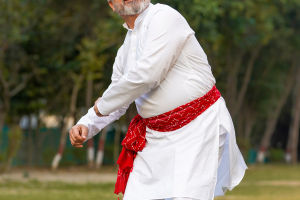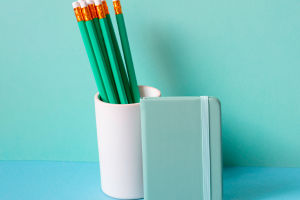Koinobori, or carp streamers, are a traditional decoration for Japan's Children's Day, symbolizing courage, strength, and success.
Every year on May 5th, Japanese families hang Koinobori to celebrate Children's Day, particularly to commemorate boys.
The history of Koinobori dates back a long time. Initially, they were flags used by families to decorate their yards, symbolizing the health and longevity of boys in the household. In ancient Japan, families would hold ceremonies to pray for the healthy growth of children, especially boys. By the 19th century, with cultural customs evolving, Koinobori gradually became one of the key symbols of Children's Day.
Traditional Koinobori typically consists of three to five colorful flags, each representing a different symbolic meaning. The most common colors are black, red, and blue, representing different types of carp. The black Koinobori usually represents the father or the eldest son in the family, while the red or blue ones represent other boys. The smallest flag may be gold, symbolizing the future and hope of the boy.
Koinobori are usually made of fabric or plastic, shaped like fish, and feature details such as the fish's eyes, scales, and tail. Traditional Koinobori are often finely crafted, with handmade flags adorned with specific patterns and designs to enhance their beauty and symbolic significance.
These flags are hung on tall poles in the home or yard, and as the wind blows, they sway gracefully, giving a lively feeling. The practice of hanging Koinobori is especially common in rural areas of Japan, although city families also hang them on balconies or rooftops.
In modern society, the design and materials of Koinobori have evolved. In addition to traditional fabric and plastic, many families now use other lightweight, durable materials such as polyester or nylon to create more practical Koinobori for modern homes. Furthermore, some families now opt for more personalized designs, using additional colors and decorations to reflect the family's unique characteristics and wishes.
The origins of Children's Day celebrations are closely linked to Koinobori. According to an ancient legend, the carp is a brave and resilient fish, often able to swim upstream and overcome numerous obstacles. The story of the carp leaping over the dragon gate, and becoming a dragon, has become a symbol of Children's Day.
This legend depicts the carp's journey to the dragon gate, where it transforms into a dragon, symbolizing the idea that boys can overcome life's challenges through hard work and courage, ultimately achieving success.
Hanging Koinobori represents a blessing for the children's future. On this day, families often prepare special foods and activities for the boys, expressing their wishes for their healthy growth. One of the traditional foods for Children's Day is "kashiwa-mochi" (oak leaf-wrapped rice cakes).
With societal development and cultural changes, Koinobori has also become widely used in public spaces in Japan. Many streets, bridges, and even riverside areas in cities and rural areas hang large Koinobori, creating a beautiful landscape, especially around Children's Day. In Tokyo, the Sumida River area hosts a Koinobori festival every year, where hundreds of vibrant Koinobori fly in the wind, attracting thousands of visitors and photographers.
In summary, Koinobori, as a traditional decoration for Japan's Children's Day, is not just a symbol of celebration. It deeply reflects Japanese cultural values and carries beautiful wishes and hopes for boys' futures. These colorful flags symbolize that every boy can, like the carp, bravely pursue their dreams and ultimately embrace a bright future.


